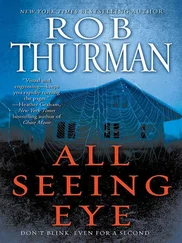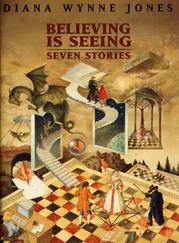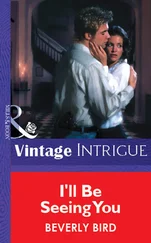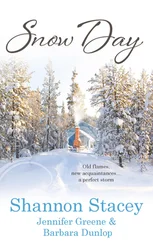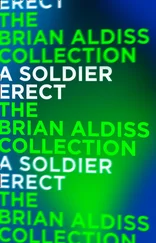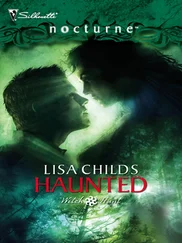Where did the mad scientist stock figure come from? How did the scientist – the imagined kind – become so very deluded and/or demented?
It wasn’t always like that. Once upon a time there weren’t any scientists, as such, in plays or fictions, because there wasn’t any science as such, or not science as we know it today. There were alchemists and dabblers in black magic – sometimes one and the same – and they were depicted, not as lunatics, but as charlatans bent on fleecing the unwary by promising to turn lead into gold, or else as wicked pact-makers with the Devil, hoping – like Dr Faustus – to gain worldly wealth, knowledge and power in exchange for their souls. The too-clever-by-half part of their characters may have descended from Plato’s Atlanteans or the builders of Babel – ambitious exceeders of the boundaries set for human being, usually by some god, and destroyed for their presumption. These alchemists and Faustian magicians certainly form part of the mad scientist’s ancestral lineage, but they aren’t crazy or deluded, just daring and immoral.
It’s a considerable leap from them to the excesses of the wild-eyed B-movie scientists. There must be a missing link somewhere, like the walking seal discovered just recently – though postulated by Charles Darwin as a link between a walking canid and a swimming seal. For the mad scientist missing link, I propose Jonathan Swift, acting in synergy with the Royal Society. Without the Royal Society, no Gulliver’s Travels, or not one with scientists in it; without Gulliver’s Travels, no mad scientists in books and films. So goes my theory. I read Jonathan Swift’s Gulliver’s Travels as a child, before I knew anything about the B-movie scientists. Nobody told me to read it; on the other hand, nobody told me not to. The edition I had was not a child’s version, of the kind that dwells on the cute little people and the funny giant people and the talking horses, but dodges any mention of nipples and urination, and downplays the excrement. These truncated versions also leave out most of Part Three – the floating island of Laputa, the Grand Academy of Lagado with its five hundred scientific experiments, the immortal Struldbrugs of Luggnagg – as being incomprehensible to young minds. My edition was unabridged, and I didn’t skip any of it, Part Three included. I read the whole thing.
I thought it was pretty good. I didn’t yet know that Gulliver’s Travels was satirical, that Mr Swift’s tongue had been rammed very firmly into his cheek while writing it, and that even the name ‘Gulliver’, so close to ‘gullible’, was a tip-off. I believed the letters printed at the beginning – the one from Mr Gulliver himself, complaining about the shoddy way in which his book had been published, and the one from his cousin Mr Sympson, so close to ‘simpleton’, I later realised – testifying to the truthfulness of Mr Gulliver. I did understand that someone called Mr Swift had had something to do with this book, but I didn’t think he’d just made all of it up. In early eighteenth-century terms, the book was a ‘bite’ – a tall tale presented as the straight-faced truth in order to sucker the listener into believing it – and I got bitten.
Thus I first read this book in a practical and straightforward way, much in the way it is written. For instance, when Mr Gulliver pissed on the fire in the royal Lilliputian palace in order to put it out, I didn’t find this either a potentially seditious poke at the pretensions of royalty and the unfairness of courts or a hilarious vulgarism. Rather, having been trained myself in the time-honoured woodsman’s ways of putting out campfires, I thought Mr Gulliver had displayed an admirable presence of mind.
The miniature people and the giants did hint to me of fairy tales, but Part Three – the floating island and the scientific establishment – didn’t seem to me all that far-fetched. I was then living in what was still the golden or bug-eyed monster age of science fiction – the late forties – so I took spaceships for granted. This was before the disappointing news had come in – No intelligent life on Mars – and also before I’d read H.G. Wells’ The War of the Worlds, in the light of which any life intelligent enough to build spaceships and come to Earth would be so much smarter than us that we’d be viewed by them as ambulatory kebabs. So I considered it entirely possible that, once I’d grown up, I might fly through space and meet some extraterrestrials, who then as now were considered to be bald, with very large eyes and heads.
Why then couldn’t there be a flying island such as Laputa? I thought the method of keeping the thing afloat with magnets was a little cumbersome – hadn’t Mr Swift heard of jet propulsion? – but the idea of hovering over a country that was annoying you so they’d be in full shadow and their crops wouldn’t grow seemed quite smart. As for dropping stones on to them, it made perfect sense: kids of the immediately post-war generation were well versed in the advisability of air superiority, and knew a lot about bombers.
I didn’t understand why these floating-island people had to eat food cut into the shapes of musical instruments, but the flappers who hit them with inflated bladders to snap them out of their thought trances didn’t seem out of the question. My father was by that time teaching in the Department of Zoology at the University of Toronto, and growing up among the scientists, and thus being able to observe them at work, I knew they could be like that: the head of the Zoology Department was notorious for setting himself on fire by putting his still-smouldering pipe into his pocket, and could have made excellent use of a flapper.
When I got as far as the Grand Academy of Lagado I felt right at home. In addition to being the golden age of bug-eyed monsters the late forties was also the golden age of dangerous chemistry sets for children – now prohibited, no doubt wisely – and my brother had one. ‘Turn water to blood and astonish your friends!’ proclaimed the advertisements, and this was no sooner said than done, with the aid of a desirable crystal named – as I recall – potassium permanganate. There were many other ways in which we could astonish our friends and, short of poisoning them, we did all of them. I doubt that we were the only children to produce hydrogen sulphide (‘Make the smell of rotten eggs and astonish your friends!’) on the day when our mother’s bridge club was scheduled to meet. Through these experiments, we learned the rudiments of the scientific method: any procedure done in the same way with the same materials ought to produce the same results. And ours did, until the potassium permanganate ran out.
These were not the only experiments we performed. I will not catalogue our other adventures in science, which had their casualties – the jars of tadpoles dead from being left by mistake in the Sun, the caterpillars that came to sticky ends – but will pause briefly to note the mould experiment, consisting of various foodstuffs placed in jars – our home-preserving household had a useful supply of jars – to see what might grow on them in the way of mould. Many-coloured and whiskery were the results, which I mention now only to explain why the Grand Academy ‘projector’ who thought it might be a brilliant idea to inflate a dog through its nether orifice in order to cure it of colic raised neither of my eyebrows. It was a shame that the dog exploded, but this was surely a mistake in the method rather than a flaw in the concept; or that was my opinion.
Indeed, this scene stayed with me as a memory trace that was reactivated the first time I had a colonoscopy, and was myself inflated in this way. You had the right idea, Mr Swift, I mused, but the wrong application. Also, you thought you were being ridiculous. Had you known that the dog-enlarging anal bellows you must have found so amusing would actually appear on Earth 250 years later in order to help doctors run a tiny camera through your intestines so they could see what was going on in there, what would you have said?
Читать дальше


